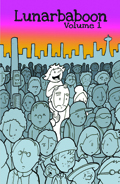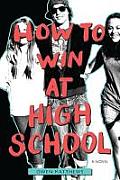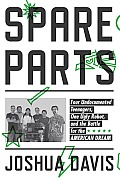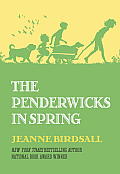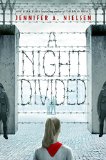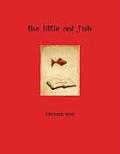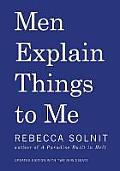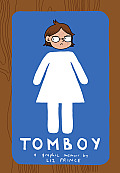Link to this review in the form of a comic strip by billba tagged humor • comic strips

Click for the full-sized comic
Collecting comic strips originally published on www.lunarbaboon.com
Link to this review by diane tagged coming of age
Adam Higgs is a loser — he’s short, chubby, has zits, and is the new kid in school. He’ll never come close to the god-like status his athletic older brother achieved before he ended up in a wheelchair, and his job at the pizza parlor gives the wealthier kids a chance to abuse him. Adam needs a plan. Using his hero Scarface as a role model, Adam starts out offering to do others’ homework for a price before moving on to providing booze for parties as well as fake IDs. Pretty soon the “Pizza Man” is one of the most popular guys in school. Unfortunately his popularity has a price.
Why I picked it up: The blurb inside the cover about a loser teen trying to figure out how to take over his school.
Why I finished it: To see just how far Adam would take his schemes before it all began to crumble. Adam’s brother was the innocent one, and it broke my heart to see how Adam’s antics impacted their relationship, which is the heart and soul of this book.
Owen Matthews is a young writer from Vancouver, Canada, who has a good handle on what high school is like. His stark, clipped writing style that has a diary-like feel moves the action along swiftly. High school can be a cruel time and it felt like an episode of Punk’d, but it soon became clear that something disastrous was going to happen. In the end, this is a great story about the illusion of popularity and a lesson about what really matters.
It’s perfect for: Victor, who will get a kick out of Adam’s antics and admire him for his ability to fleece the rich kids. He’ll also like how quickly the story moves — although there are almost 500 pages, many chapters are less than half a page long, so it really flies.
Link to this review by emilyreads tagged coming of age • science
In the economically depressed exurbs of Phoenix, four unassuming teenage boys with questionable immigration status manage to overcome low expectations and tremendous odds to find success and purpose in engineering and robotics. First profiled in WIRED magazine and later dramatized in a feature film, these unexpected geeks and their robot, “Stinky,” exemplify the American Dream: hard work, ingenuity, and a healthy disregard for obstacles. It’s Stand and Deliver with robots.
Why I picked it up: I like teenagers and I like science. And who wouldn’t root for an ugly robot made from PVC and tampons?
Why I finished it: It would have been easy for Davis to end the book at the 2004 MATE championship: it’s the culmination of everything the boys had worked for to that point, and a great feel-good moment. But to his credit, Davis didn’t stop there. He followed these young men past graduation, into low-wage jobs, tenuous educational experiences, and in one case, deportation and separation from his family. These kids were the best and brightest: smart, motivated, and light-years away from the harmful stereotypes of Latino immigrants peddled by angry politicians. Why couldn’t we, as a nation, do better by them?
It’s perfect for: My friend Ben, a geek of the purest order and an immigrant himself (though from England, not Mexico). He is the kind of guy with a server farm in his basement who writes Python scripts to automate the middle-school registration process in his spare time. He’d appreciate the low-tech, practical energy the teenage protagonists bring to their quest for glory.
Link to this review by geneambaum tagged coming of age
The youngest of the original Penderwick sisters, Batty, is now in fifth grade, and she’s dealing with a lot. Her beloved dog, Hound, died recently. She’s not only struggling to live in a world without him, she also believes that if she’d loved him more he would still be alive. Batty is also an earnest musician who has just discovered her love of singing but worries about how to make money for lessons. It’s impossible to talk to anyone about what’s going on in her head because of all the teenage romances in the air. And then she overhears one of her sisters blaming her for her mother’s death, and Batty’s world completely falls to pieces. Even worse, no one really notices.
Why I picked it up: My daughter and I love this series. They’re our favorites to read aloud, and yes, we’re still reading them, even as she’s on the verge of becoming a teenager.
Why I finished it: Batty is hilarious, despite everything she’s dealing with. She’s supposed to do book reports for school, and is haunted by a chart that shows she hasn’t done any while others have already exceeded their quota. This guilt haunts her, but not enough to make her do the reports. She’s not lazy, she just doesn’t like the idea of them: “ …for Batty, reading was like having a private conversation with the book’s characters. Writing a report — making it all public — wrecked that.”
It’s perfect for: My sister, Traci. When Batty starts walking her neighbor’s overweight dachshund to earn money, she has to bring it home from its first walk in a stroller. Our grandmother always had massively overweight pets, and I know this will remind Traci of Dudley (a rotund, tail-less, one-eyed cocker spaniel) and Sammy (a Siamese cat who survived being run over twice, and liked to ride in my grandmother’s toy stroller when he wasn’t eating bacon or chocolate chip cookies).
Link to this review by flemtastic tagged historical fiction • coming of age
Gerta, her brother Fritz, and their mom were separated from their father and brother, who went to West Germany from East Germany on a short errand the night the guarded, barbed-wire fence that separated the two Germanys was unexpectedly erected. Sure the barriers would soon be removed and that their family would be reunited, they didn’t make a risky charge to freedom. (Others did. Some rammed the fence in cars and crashed through the barbed wire in a hail of machine gun fire. One family even famously ballooned over the border.) Instead they waited. A wall was built, and the neutral zone between the two countries was booby-trapped with land mines.
After being apart for years, Gerta’s father makes eye contact with her over the wall and gives her a signal that she interprets as a digging motion. Because the time of Fritz’s mandatory military service is fast approaching, they decide to try to escape, and start digging a tunnel from within an abandoned house next to the border. They must hide the tunnel not only from nosy neighbors and border guards, they also have to keep it secret from their mother, who would disapprove of it as too risky.
Why I picked it up: I went to West Berlin as a teenager, when the wall was still up, which required me to pass through East Germany. We had our bus searched by East German guards with sub-machine guns and dogs before we were allowed across the border. Since I had that experience, picking this up was a no-brainer.
Why I finished it: It had pathos aplenty, with a family torn apart by chance, and a possible reunion dependent on luck, timing, and hard work. There was a lot going on in this slender novel, most of which will be new information to most students. I particularly appreciated the information about the Stasi and how the border zone functioned.
Readalikes: I Am David and North to Freedom by Anne Holm, both historical YA novels about escaping from oppressive Eastern European countries. I Am David was a favorite of mine when I was in middle school.
Link to this review by gigi tagged picture book
JeJe’s grandfather is a librarian. One day he lets JeJe visit the library and brings along his little red fish. Soon after arriving, JeJe falls asleep. When JeJe wakes up he is scared because it is very dark, so he moves to where the moon shines and begins reading to his fish. When he looks up the fish is gone.
Why I picked it up: My parents read it to me when I was little, and I came across it at the back of my bookshelf the other day.
Why I finished it: The illustrations are sepia colored. But after the fish disappears, there’s a book on the shelf that’s the same color as the fish. When JeJe opens the book, it’s magical.
Readalikes: It reminds me of Dr. Seuss’s One Fish Two Fish Red Fish Blue Fish because both books have red fish in them.
Link to this review by darcy tagged essays
A collection of essays from Rebecca Solnit that cover marriage equality, feminism and violence against women.
Why I picked it up: A friend told me that I’d really like the essay called Men Explain Things to Me because I’d appreciate the humor, and that the whole collection was an important book for feminism.
Why I finished it: My friend was correct. In the essay “Men Explain Things to Me,” Solnit examines interactions between men and women where men feel the need to educate women on things they think women won’t understand. She even brings up a brilliant example where a man she met at a party continues to tell her about a very important book, and continued talking over her and her companion even after they tried to explain to him that Solnit wrote it. Reminded me of a male relative who now tells me historical and scientific tidbits that I’ve told him in the course of many conversations — he refuses to believe that I was the source of the information. I’ve been a victim of enough “mansplaining” that I spent a good portion of that essay laughing out loud.
Other essays such as “The Longest War,” tackle tough topics like rape and violence against women. She gives examples of rape cases across the world and makes the point that violence doesn’t have a class or a nationality, but it most certainly has a gender. That really hit home. I’m raising a boy and a girl and despite the maternal need to “raise them equally” I realize that will never happen. I have to educate them separately and together on what feminism means and what rape is, and still hope they turn out as compassionate humans who understand the value of mutual respect.
It’s perfect for: My daughter. She’s a bit young yet, but I’m collecting books to give her as she gets older, including The Handmaid’s Tale, Gone with the Wind, A Room of One’s Own and other titles to help her understand the world as a young woman.
Link to this review by geneambaum tagged picture book
A dog and a rat spot a flat rabbit lying in the street. It’s a bit sad. They try to figure out what to do with her.
Why I picked it up: Never read a book by a Faroese writer before.
Why I finished it: I love the black inks, which look as if they were done with an unsteady pen, which gives the book a very fun, silly tone despite the subject matter. And Oskarsson made me laugh early on as the dog is trying to figure out if he knows the rabbit, “I think she’s from number 34. I’ve never talked to her, but I peed on the gate a couple of times…”
Readalikes: I’m not sure if there are enough books out there for a roadkill-themed storytime. What a great chance to modify some boring old puppets with scissors and raspberry jam! But my favorite deadpan kids book, Terrific by Jon Agee, about an old man with a bad attitude, has a sense of humor that has a lot in common with this book’s.
Link to this review by sarahhunt tagged coming of age • biography • graphic novel
As soon as she was old enough to make her opinion known, Liz refused to wear dresses. She preferred boy clothes and boy toys, and her parents respected her wishes. But in the neighborhood, at school, in little league, and at scout meetings, she faced kids and adults who taunted, bullied, or froze her out for not acting enough like a girl.
Why I picked it up: My coworker and pal Stephanie said it was one of her top graphic novels for 2014, and I don’t think I’ve ever seen a memoir about being a tomboy.
Why I finished it: Liz isn’t a lesbian (though some assume she is) and isn’t transgender, she just expresses her gender outside the inflexible standards of the people around her. In elementary school, some girls in the restroom told her the legend of Bloody Mary and that Mary especially liked to kidnap tomboys. Older boys tripped and punched her (she never told anyone). She was teased whether she hung out with boys (tomboy!) or girls (lesbian!). At girl scout camp she found out how harshly girls judged each others’ bodies, so she changed in the outhouse and swam in a giant t-shirt but ended up being teased anyway when other girls saw that she wore tighty-whitey underwear. She started hating girls because of how mean they were (except for a few tomboy friends she made in middle school). Then she met a woman who mentored her in her interest in drawing comics and challenged her to think about whether she really hated girls (and herself) or if she hated the expectations that society puts on girls.
It’s perfect for: The Mother Daughter Book Club at my library. I think the generation difference between the moms and daughters, and how they have experienced nonconformity in gender and orientation, would lead to some great discussions. Liz’s story is very much her own and rooted in when she grew up (playing with Ghostbusters toys and later adopting gender-neutral grunge clothing), so I would love to hear what that experience was and is like for others.
